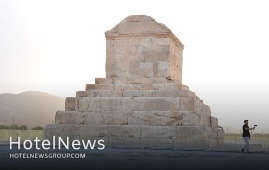
Iranian government has allocated a sum of 200 billion rials (about $4.7 million at the official exchange rate of 42,000 rials per dollar) to develop tourism infrastructure at the UNESCO-designated Pasargadae. A budget of 200 billion rials has been allocated to Pasargadae after President Ebrahim Raisi visited the Achaemenid site earlier in October, a senior tourism official, Javad Vahedi, said on Friday. The Pasargadae complex, as a magnificent World Heritage site, has a high tourism potential in the field of cultural and historical tourism, and we must plan to attract more tourists,” the official explained. Situated about 50 km north of Persepolis, Pasargadae was the first dynastic capital of the Achaemenid Empire, founded by Cyrus II the Great, in Pars, the homeland of the Persians, in the 6th century BC. Its palaces, gardens, and the mausoleum of Cyrus are outstanding examples of the first phase of royal Achaemenid art and architecture and exceptional testimonies of Persian civilization. The UNESCO World Heritage site is also home to a complex water supply system for the time that comprises cisterns, tunnels, underground canals, and ducts, which are locally known as qanats. It is believed that the development of qanats began about 2,500 or 3,000 years ago in Persia (Iran), and the technology spread eastward to Afghanistan and westward to Egypt. Although new qanats are seldom built today, many old qanats are still used in Iran and Afghanistan, chiefly for irrigation. The 160-ha archaeological site of Pasargadae presents some of the earliest manifestations of Persian art and architecture. It includes, among other monuments, the compact limestone tomb on the Morgab plain that once held Cyrus the Great’s gilded sarcophagus; Tall-e Takht (“Solomon’s Throne”), a great fortified platform built on a hill and later incorporated into a sprawling citadel with substantial mud-brick defenses; and the royal ensemble, which consists of several palaces originally located within a garden layout (the so-called “Four Gardens”). Pasargadae became a prototype for the Persian Garden concept of four quadrants formally divided by waterways or pathways, its architecture characterized by refined details and slender verticality. Pasargadae stands as an exceptional witness to the Achaemenid civilization. The vast Achaemenid Empire, which extended from the eastern Mediterranean and Egypt to the Hindus River in India, is considered the first empire to be characterized by a respect for the cultural diversity of its peoples. This respect was reflected in the royal Achaemenid architecture, which became a synthesized representation of the empire’s different cultures. Pasargadae represents the first phase of this development into a specifically Persian architecture which later found its full expression in the city of Persepolis.
Create: Oct 31, 2021 Edit: Oct 31, 2021 Regional News
Cycas Hospitality, the award-winning pan-European operator, has signed a deal to operate London Town Group’s portfolio of upscale boutique hotels in the UK capital. The London Town Group of Companies, founded by Koolesh Shah, is one of the UK’s leading, privately-held real estate and energy investment companies. The agreement sees Cycas welcome its first two Mercure-branded hotels – part of Accor – to its portfolio. While the 72-room Mercure London Hyde Park – set within a Grade II listed building – recently completed a multi-million-pound refurbishment, the 86-room Mercure London Paddington is scheduled to start a fully renovation programme next year. As part of the extensive works, the hotel will upgrade its ground floor food and beverage facilities and transform its top floor into a rooftop bar.As Cycas’s seventh IHG-branded property, the 64-room Hotel Indigo London Paddington becomes its first Hotel Indigo in London and joins Hotel Indigo Dundee as its second in the UK. All three properties offer a wide range of dining options, meetings facilities and state-of-the-art fitness centres, all just a short walk from Hyde Park and Paddington Station, whose access will be further boosted with next year’s opening of Crossrail and the Elizabeth Line. Cycas has appointed Tanja Furby as Cluster General Manager for the three London hotels. A seasoned operator who has worked across a wide range of leading hospitality brands, Tanja’s commercial skills, leadership and local knowledge will help Cycas maximise each property’s customer offering. Koolesh Shah, Founder of London Town Group, said “As our business diversifies and grows, I felt now was the time to bring on board a recognised industry leader in hotel operations to partner on the transformation journey of our hotels. “We’ve always prided ourselves on our collection of leading branded-boutique hotels, and we’re confident that Cycas’s track-record in delivering the highest hospitality standards will ensure we can continue to give our guests the best possible experience.” Matt Luscombe, Chief Executive Officer at Cycas Hospitality, said: “I’ve known and admired Koolesh and his team for many years, since he opened the first Hotel Indigo outside of North America in 2009. Over the last decade, London Town Group has been synonymous with commercial and operational excellence. “With their central locations and exceptional transport links, these three hotels are ideally positioned to capitalise on the recovery in business and leisure travel. We’re proud and excited to begin this partnership together. The deal follows continued expansion for Cycas Hospitality, which has now opened or taken over 17 hotels in 12 months, despite the challenges posed by the Covid-19 pandemic,
Create: Oct 31, 2021 Edit: Oct 31, 2021 International News
The Islamic Republic of Iran should benefit from World Cup as a considerable opportunity to promote its distinctive travel attractions, the deputy tourism minister has said. "With the World Cup being held in a neighboring country, Iran can benefit from this important event, which if carefully planned, can bring significant wins for various sectors, especially the tourism industry in the country," CHTN quoted Ali-Asghar Shalbafian as saying on Wednesday. The geographical position of Iran and its unique tourist attractions make it a potential destination for the World Cup spectators, the official added. Therefore, proper policy-making and management in collaboration with the private sector can pave the way for the widespread use of this event, he noted. Increasing the number of flights between Iran and Qatar during the event, which will be held from November 21 to December 18, 2022, as well as showcasing and introducing distinctive tourist attractions of the country to the spectators at this event are on the agenda of the tourism ministry, he explained. Back in September, Cultural Heritage, Tourism, and Handicrafts Minister Ezzatollah Zarghami announced the issuance of tourist visas and the flow of foreign tourists to Iran would resume as per President Ebrahim Raisi’s order following 19 months of suspension. However, now that the tourist visas are once again being issued to cultivate good grounds of hope for travel insiders. Months of steep recession has taken its toll. Many travel insiders, hoteliers, and tour operators have faced big dilemmas such as bankruptcy, unemployment, debts, and the prospects of not being competitive on the international level. Meanwhile, the number of people testing positive for COVID-19 has continued to fall in the Islamic Republic, curbing a stubborn fifth wave of the pandemic, which has seen daily mortalities of up to 700 in recent weeks. As of September 22, the figure dropped to below 300 as the government has devoted a great deal of effort to vaccinate citizens against the nasty virus. Some experts believe Iran is still somehow “unknown” for many potential travelers due to Western “media war”. Several estimates have been released so far on the extent of the tourism-related losses incurred by the pandemic. Only months into the outbreak, Zarghami’s predecessor, Ali-Asghar Mounesan, lamented that the number of foreign travelers to Iran was drastically plunged due to the pandemic. Tourism of the country was growing before the corona [outbreak], its revenues reached $11.7 billion in 2019, which accounted for 2.8% of GDP, nearing the average share of tourism in the world GDP, which was 3.2 percent,” Mounesan said. He added 8.7 million foreign nationals visited Iran during the [Iranian] year (1398), adding that Iran was ranked as the second fastest-growing country in tourism based on data compiled by the World Tourism Organization. Experts expect Iran to achieve a tourism boom after coronavirus contained, believing its impact would be temporary and short-lived for a country that ranked the third fastest-growing tourism destination in 2019. The Islamic Republic expects to reap a bonanza from its numerous tourist spots such as bazaars, museums, mosques, bridges, bathhouses, madrasas, mausoleums, churches, towers, and mansions, of which 26 are inscribed on the UNESCO World Heritage list. Under the 2025 Tourism Vision Plan, Iran aims to increase the number of tourist arrivals from 4.8 million in 2014 to 20 million in 2025.
Create: Oct 31, 2021 Edit: Oct 31, 2021 Regional News
Before the pandemic, hotel brands were at a crossroads with increasingly brand agnostic consumers and ever-expanding brand portfolios. But there is evidence that the pandemic may have led to consumers’ renewed appreciation for a well-recognized brand name that assures quality and instills trust. This change in consumer behavior will impact brand management strategies in several significant ways. De-emphasizing brand-proliferation strategiesIn 2010, room demand jumped 6.5% as the industry emerged from a recession. This marked the beginning of a decade-long, demand-fueled brand proliferation that now provides over 1,000 hotel brands for travelers according to STR. Underpinning the surge in brand options are segmentation and brand portfolio strategies. Segmentation allows hoteliers to take a diverse traveler population and organize it into homogeneous groups (e.g., business, staycation) (Kotler et al., 2017). Brand portfolio refers to a “house of brands” approach which incorporates the corporate brand and any number of secondary or subsidiary brands (Muzellec & Lambkin, 2009). Both strategies contributed to the proliferation of new brands that were largely targeting the millennial segment and catering to their desires for work-life balance, authenticity and technology. When people are ready to travel again, their needs might become more homogeneous as their accommodation choices will mostly be based on cleanliness and safety. Moreover, the expectation of a slow recovery in economic activities coupled with a synchronized global recession suggest that rooms demand, which STR forecasts to drop by 51.2% this year, will not return to previous levels anytime soon, let alone grow. Taken together, segmentation to find new niche and a “house of brands” approach to capture excess demand will be less important in the hospitality brand management discussion. Emphasizing brand authenticitySince the pandemic disrupted current and future travel on an unprecedented scale, it may well have reminded consumers of the value of a brand. In fact, a recent IDC survey of over 1,500 U.S. consumers revealed that travelers will be more likely to seek out brand name and four-star or above hotels for assurance when they travel again. This represents an opportunity for hotel brands to reconnect with the public with better defined brand value that goes beyond the rooms and service offerings. One such strategy is authenticity branding. Brand authenticity (i.e., the extent to which a brand is “faithful toward itself, true to its consumers, motivated by caring and responsibility, and able to support consumers in being true to themselves,” Morhart et al., 2014, p.8) has been shown to help luxury hotel brands generate brand love as well as improve business performance (Manthiou et al., 2018). It encompasses not only the traditional hospitality value to genuinely care for others but also modern relationship and cause marketing theories (e.g., corporate social responsibility) to foster meaningful engagement with consumers and various stakeholders. The new generation of hospitality leaders need to grasp the concept of brand authenticity to rise above the current crisis and take the industry to a more sustainable, brand-driven future. Human-technology interaction theories to strengthen brand identityHoteliers had shown reluctance in adopting technology in the past, partly due to high costs, but mostly due to the lukewarm reception (e.g., low usage of loyalty app, perceived low performance of service robots) from consumers who demand a personal touch. But social distancing, online ordering, curbside pickup, and other measures implemented during the pandemic have accustomed consumers to contactless consumption. Many hoteliers (e.g., Hilton) see contactless technology, such as mobile check-in and payment, as necessary standards post-pandemic (Wroten, 2020). Using AI and robotics to further reduce interpersonal contacts will likely be the next frontier to push to gain trust from the pandemic-stricken consumers and encourage them to travel again. The Westin Houston Medical Center hotel using robots in sanitizing and disinfecting its property is a case in point. The challenge for hotel brands is to meaningfully fuse technology (AI and robotics) into a hotel brand’s identity rather than simply use them in operational procedures (e.g., cleaning) that are typically undifferentiated across properties and brands. Theories pertaining to usability, aesthetics, and emotions in human-technology interactions (Wu, Fan, & Mattila, 2015) and how these interactions transpire in favorable brand associations will shed light on this technology branding endeavour for burgeoning hospitality leaders.
Create: Oct 27, 2021 Edit: Oct 27, 2021 Hotel Management
Four Seasons Resort Hualalai announces the culmination of its more than USD 100 million property-wide renovation with the unveiling of its top three villas – Hawaii Loa Presidential Villa, Makaloa Villa and Ho`onanea Villa – the largest and most luxurious villa accommodations in Hawaii. These villas are the epitome of the Resort’s signature Specialty Suite program, featuring twelve of the Resort’s bespoke accommodations with exclusive benefits and inclusions. The only Forbes Five-Star and AAA Five-Diamond Resort on the Island of Hawaii, the Resort’s multi-million-dollar renovation marks the Resort’s largest renovation since its debut 25 years ago. The transformation includes an enhancement of all guest rooms and suites; a new, elevated infinity pool and lounge deck at King’s Pond, Hualalai’s 1.8-million-gallon (6.8 million litre) swimmable aquarium; the Kumu Kai Marine Center; a new gourmet poolside menu from Executive Chef Richard Polhemus; a transformation of the signature Hualalai Golf Course; and the launch of the Hualalai Golf Hale, a 3,000 square-foot (280 square metre) instruction, practice and entertainment facility – the only facility of its kind in Hawaii. Helmed by San Francisco-based BAMO, the design firm perfectly captured the authentic Hawaiian experience and beloved spirit of Hualalai. “With the conclusion of our renovation, we are proud to begin this iconic Resort’s next chapter by defining a new level of luxury in Hawaii,” says General Manager Charlie Parker. “The most dramatic update was to our three largest villas, responding to our guests’ increased demand for this calibre of accommodations in Hawaii. These distinctly designed villas truly serve as a home-away-from-home for our guests and their extended families and friends.” Each villa has been expanded to add a second level, indoor-outdoor living space, and private plunge pools. Thoughtful, unique design elements are showcased throughout the spacious accommodations, with the incorporation of local artwork, slate floors, glass pocket doors opening the living area to the outdoors and natural hardwood trim. The aesthetic is personable and warm with a residential quality, designed to provide a private oasis with the amenities and service Hualalai is known for.
Create: Oct 27, 2021 Edit: Oct 27, 2021 International News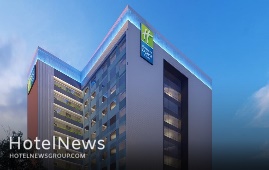
IHG® Hotels & Resorts, one of the world’s leading hotel companies, has signed a management agreement with notable real estate developer, Dinesh Kumar Choudhary (HUF) for a new hotel – Holiday Inn Express & Suites Jaipur Karoli Bagh located at Gopalpura Byepass, in the capital of Rajasthan. The brownfield hotel featuring 141 keys is expected to be operational by the first quarter of 2023. Jaipur is the largest city in Rajasthan and one of the most popular leisure destinations, both for domestic and international travellers. It is an integral part of the Golden Triangle, a prominent tourist circuit connecting the national capital Delhi, Agra and Jaipur, and is also a preferred wedding destination in India. Furthermore, the city houses numerous industries and is considered as the economic capital of Rajasthan. With the new signing of Holiday Inn Express & Suites Jaipur Karoli Bagh, the city will now have three IHG hotels between Crowne Plaza, Holiday Inn and Holiday Inn Express, catering to varied guest profiles. Holiday Inn Express & Suites Jaipur Karoli Bagh will be located on the Gopalpura Bypass road, at a convenient 15-minute drive from the airport. The hotel will also be at a short driving distance from the city centre, business district, tourist attractions, as well as key dining and shopping destinations. With excellent visibility and access, Holiday Inn Express & Suites Jaipur Karoli Bagh will provide a convenient stay experience to both business and leisure travellers. The newly signed hotel will feature well-appointed modern guest rooms and all the necessary facilities for a comfortable stay experience. The hotel will also have the brand’s signature ‘Great Room’, ‘Small Bar’, a specialty restaurant and a lounge to relax and unwind. Other essential facilities will include a fitness room, and meeting spaces for business and social gatherings. Commenting on the new development, Sudeep Jain, Managing Director, South West Asia, IHG Hotels & Resorts, said, “We are thrilled to announce the signing of a new Holiday Inn Express & Suites hotel in Jaipur and solidify our presence in the state of Rajasthan. With a rich culture, history and cuisine, Jaipur is one of the most popular tourist destinations of India. With diverse guest profiles visiting the city, there is an increasing need for mainstream accommodation, and we are confident that Holiday Inn Express & Suites Jaipur Karoli Bagh will be a great choice for travellers looking for a simple and engaging hotel stay experience. He added: this new signing is also in line with our strategy to expand our ‘essentials collection’ across key markets in India and further strengthen our mainstream presence in the country, in line with market demands.” Mr. Dinesh Kumar Choudhary, Head of Hindu Undivided Family (HUF) added, “We are excited to partner with an internationally and domestically known and trusted hospitality brand like IHG. With a combination of an excellent location, the power of IHG’s distribution system, strong loyalty programme and expertise in the hospitality segment, we are confident that Holiday Inn Express & Suites Jaipur Karoli Bagh will emerge as a popular choice amongst the travellers visiting Jaipur.” Holiday Inn Express is one of IHG’s fastest-expanding hotel brand. It is designed for the smart travellers who are looking for a simple, yet engaging place to reconnect and refresh. IHG® currently has 41 hotels operating across five brands in SWA, including Six Senses, InterContinental Hotels and Resorts®, Crowne Plaza®, Holiday Inn® , Holiday Inn Resort® and Holiday Inn Express®, and a strong pipeline of 50 hotels due to open in the next 2-3 years.
Create: Oct 25, 2021 Edit: Oct 25, 2021 International News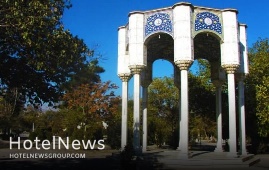
Ibn Babawayh is a vast historical cemetery located in Rey, southern Tehran, in which many Iranian figures have been laid to rest. It is named after Ibn Babawayh who was an Islamic theologian and the author of one of the “Four Books” that are the basic authorities for the doctrine of Twelver Shi’ism. Also called Sheikh Saduq, Ibn Babawayh, whose full name is given as Abu Jafar Muhammad ibn Abu al-Hasan Ali ibn Husayn ibn Musa al-Qummi, was born in c. 923 CE, Khorasan, northeast Iran, and he died in Ray in 991. Originally built during the reign of Samanids (819-999), the cemetery has been ruined many times, and for various reasons, such as the Mongol invasion (1219-1221 CE), several civil wars, and also natural disasters. There is an interesting story behind the construction of the current cemetery which occurred during the Qajar era. Once, as Haj Mohammad Baqer Khansari writes in Rozat al-Janat, heavy rain destroyed and made a hole in the old cemetery. Workers went to repair the destruction, but they found an intact corpse and an inscription in the cellar of the mausoleum. Based on the inscription, the mausoleum was built 800 years ago. By the way, the news of finding an intact corpse in the mausoleum of Sheikh Saduq reached the court and the king sent an envoy to the site to confirm the truth of the story. His current tomb consists of a groin stone vault with eight pillars decorated with beige and blue tiles and is the site of pilgrimage for the Muslims. In addition, the atmospheric cemetery built around the tomb of Sheikh Saduq is one of the most revered graveyards in the ancient town of Rey. Wandering around the cemetery, you come across the graves of famous Iranian figures like Gholam-Reza Takhti, the popular Olympic gold medalist wrestler, Ali-Akbar Dehkhoda, the well-known linguist, poet, and scholar, Hossein Behzad, the eminent miniaturist, Jalal Al-e Ahmad, the contemporary writer, and many others. There used to be many private family mausoleums featuring beautiful historical buildings in Ibn Babawayh, many of which are destroyed now due to urban development projects. Rey was one of the capital cities of the Parthian empire (3rd century BC–3rd century CE) and it was captured by the Muslim Arabs in 641 CE. During the reign of the Muslim caliph al-Mahdi in the 8th century, the city grew in importance until it was rivaled in western Asia only by Damascus and Baghdad. According to Britannica, Islamic writers described it as a city of extraordinary beauty, built largely of fired brick and brilliantly ornamented with blue faience (glazed earthenware). It continued to be an important city and was briefly a capital under the rule of the Seljuqs, but in the 12th century, it was weakened by the fierce quarrels of rival religious sects. In 1220 the city was almost destroyed by the Mongols, and its inhabitants were massacred. Most of the survivors of the massacre moved to nearby Tehran, and the deserted remnants of Rey soon fell into complete ruin.
Create: Oct 25, 2021 Edit: Oct 25, 2021 Regional News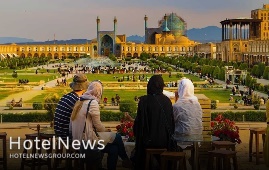
Iran's tourism industry has made every effort to stand on its own two feet despite the considerable damage caused by the virus pandemic. A country’s prosperity depends on its economic and social development, and the tourism industry plays a key role in achieving this goal, the president of Iran’s University of Science and Culture Seyyed Saied Hashemi has said. He made the remarks during the two-day symposium of One Hundred Years of Iranian Tourism, which came to an end on Wednesday. After the coronavirus crises, tourism can hopefully be a positive influence on people’s lives, he added. Many nations owe their social and economic progress to [their] tourism [industries], so it is hoped that this symposium and such events can provide a meaningful solution for the new [Iranian] government, he noted. Due to the lack of adequate coordination and cooperation between scientific institutions on the one hand and policy-makers on the other hand, the country may have faced many problems in the tourism industry during this century, and that is why it could not get enough benefit from the tourism despite having good potential, he mentioned. Another speaker at the event, Mohammad Hossein Imani Khoshkhu, the head of the industrial park for science also said there is no connection between tourism sectors in the country, while all organizations and devices must help each other to develop tourism. For instance, currently, medical tourism does not exist in the country, but there are international patients and the medical tourism activists have now become taxi drivers at airports instead of activists for related tourism, he added. Back in July, ISNA reported that Iran’s tourism industry has suffered a loss of some 320 trillion rials ($7.6 billion at the official exchange rate of 42,000 rials per dollar) since the outbreak of the coronavirus pandemic. The pandemic has also ruined more than 44,000 jobs in the once budding travel sector of the country, the report added. As a result of the outbreak of the coronavirus in Iran and the subsequent unemployment and financial losses, accommodation centers suffered the most. These statistics cover the period between February 2020 and the spring of 2021. Only months into the outbreak, Zarghami’s predecessor, Ali Asghar Mounesan, lamented that the number of foreign travelers to Iran was drastically plunged due to the pandemic. “Tourism of the country was growing before the corona [outbreak], its revenues reached $11.7 billion in 2019, which accounted for 2.8% of GDP, nearing the average share of tourism in the world GDP, which was 3.2 percent,” Mounesan said. He added 8.7 million foreign nationals visited Iran during the [Iranian] year (1398), adding that Iran was ranked as the second fastest-growing country in tourism based on data compiled by the World Tourism Organization. So far, panels of travel experts have mapped out new marketing strategies hoping the sector would get back on its feet once again. Earlier this year, the Head of the Iranian Tour Operators Association Ebrahim Pourfaraj asked the government to issue tourist visas for the international applicants who have been fully vaccinated against COVID-19. “The Ministry of Health and the National Headquarters for Coronavirus Control can at least agree that the international tourists who have received the [second dose of] coronavirus vaccine would be allowed to enter Iran.” The expert lamented that the continuation of such a trend would result in losing international tourist markets more than before. “Or at least they should make it clear so that we can respond appropriately to foreign companies and tourists to not to miss the international tourist markets more than before.” Iran is potentially a booming destination for travelers seeking cultural attractions, breathtaking sceneries, and numerous UNESCO-registered sites. Under the 2025 Tourism Vision Plan, Iran aims to increase the number of tourist arrivals from 4.8 million in 2014 to 20 million in 2025. Even before the pandemic, Iran’s tourism was already grappling with some challenges, on top of those Western “media propaganda” aimed at scaring potential travelers away from the Islamic Republic. Some experts believe Iran is still somehow “unknown” for many potential travelers due to such a “media war”. They, however, consider bright prospects for the tourism sector of the country if it vigorously pursues comprehensive strategies to counter U.S.-led propaganda and strict sanctions, yet does its best to loosen tough travel regulations.
Create: Oct 25, 2021 Edit: Oct 25, 2021 Regional News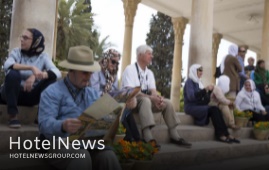
Iranian officials have announced new rules for foreign tourists interested in visiting the country, CHTN reported on Monday. As of October 23, direct and indirect entry and exit of nationals of Iran and other countries (both groups and individuals) from/to air and land borders are no longer restricted by presenting a valid vaccination card and following protocols approved by the Ministry of Health, the report added. A health certificate with a negative coronavirus PCR test result, issued at most 96 hours before arrival, is required for travelers. Direct or indirect travel from/to high-risk countries designated by the World Health Organization is excluded from this regulation. The Ministry of Health will announce the level of restrictions or bans on travels if disease processes in neighboring countries change. The Ministry of Tourism is responsible for monitoring the implementation of this instruction, and if any violations are observed, the authorities will be notified. Earlier this week, the deputy tourism minister Ali-Asghar Shalbafian announced that the National Headquarters for Coronavirus Control agreed to reopen the country’s borders to foreign tourists, based on the new conditions prevailing in the country after crossing the fifth wave of the pandemic, increasing vaccinations, and at the request of the tourism ministry. As a condition for entry into the country, the headquarters has instructed all tourists and the host communities to follow all health protocols, the official added. As the post-coronavirus era emerges, extensive measures have been taken to revive the tourism industry, he noted. He also expressed hope that issuing tourist visas would result in an upsurge in tourism. Tourist visas Back in September, Cultural Heritage, Tourism and Handicrafts Minister Ezzatollah Zarghami announced that by the order of President Ebrahim Raisi the issuance of tourist visas and the flow of foreign tourists from land and air borders will be resumed from the month of Aban (Oct. 23 – Nov. 21) following 19 months of suspension. Months of steep recession has taken its toll. Many travel insiders, hoteliers, and tour operators have faced big dilemmas such as bankruptcy, unemployment, debts, and the prospects of not being competitive on the international level. They now have good grounds of hope as Zarghami announced on September 19 that the country plans to lift visa restrictions to help the severely hit tourism industry. Meanwhile, the number of people testing positive for COVID-19 has continued to fall in the Islamic Republic, curbing a stubborn fifth wave of the pandemic, which has seen daily mortalities of up to 700 in recent weeks. As of September 22, the figure dropped to below 300 as the government has devoted a great deal of effort to vaccinate citizens against the nasty virus. Some experts believe Iran is still somehow “unknown” for many potential travelers due to Western “media war”. Several estimates have been released so far on the extent of the tourism-related losses incurred by the pandemic. Only months into the outbreak, Zarghami’s predecessor, Ali-Asghar Mounesan, lamented that the number of foreign travelers to Iran was drastically plunged due to the pandemic. “Tourism of the country was growing before the corona [outbreak], its revenues reached $11.7 billion in 2019, which accounted for 2.8% of GDP, nearing the average share of tourism in the world GDP, which was 3.2 percent,” Mounesan said. He added 8.7 million foreign nationals visited Iran during the [Iranian] year (1398), adding that Iran was ranked as the second fastest-growing country in tourism based on data compiled by the World Tourism Organization. Iran is potentially a booming destination for travelers seeking cultural attractions, breathtaking sceneries, and numerous UNESCO-registered sites. Under the 2025 Tourism Vision Plan, Iran aims to increase the number of tourist arrivals from 4.8 million in 2014 to 20 million in 2025.
Create: Oct 25, 2021 Edit: Oct 27, 2021 Regional News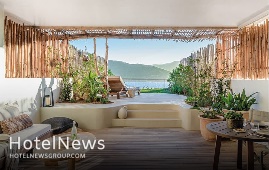
Welcome to our annual World’s Best Luxury Hotel Brands report. This is not just another World’s Best list. LTI – Luxury Travel Intelligence – has taken the past 12 months to apply the perfect assessment process: a rigorously defined algorithm that measures the performance and values of luxury hotel brands. This year, our algorithm has 131 touch points relevant to the luxury hotel sector. Each has its own weighted score value with a total maximum accumulative score of 4736. The touchpoints relate to overall brand performance, rather than the performance of individual properties. It is all about a brand’s ability to deliver: its passion, commitment, ethos and values, as well as the quality of its management and staff. Continuing investment and how well it is executed is also a major factor, particularly regarding new properties and the refurbishment of existing ones. This year’s results are reflected as percentages, with last year’s positions in brackets. 1. Six Senses 83.3% (1) 2. Mandarin Oriental 82.6% (5) 3. Auberge 81.8% (3) 4. Aman 81.4% (2) 5. Belmond 79.9% (4) 6. One&Only 77.0% (6) 7. Oetker Collection 75.7% New Entry 8. Four Seasons 74.1% (8) 9. Rosewood 73.5% (7) 10. Raffles 72.7% New Entry 11. Viceroy 72.2% New Entry 12. COMO 71.0% (10) Other brands that rated sufficiently to be monitored throughout the year are (in alphabetical order) Alila, Anantara, Banyan Tree, Dorchester Collection, Firmdale, Jumeirah, Leela, Oberoi, Park Hyatt, Peninsula, Ritz Carlton, Rocco Forte, Shangri-La, Soho House, St. Regis, Taj, The Luxury Collection. Brands that currently have less than ten properties (our minimum requirement) but rate highly when applying our algorithm are (in alphabetical order) Airelles, Althoff Collection, Bulgari, Capella, Cheval Blanc, Maybourne, Montage, Nikki Beach, Pendry, Soneva. About The World’s Best Luxury Brands ReportNo other organisation connects with the global luxury hotel industry as LTI does. Our researchers engage with everyone from CEOs of the brands we have rated to thousands of managements, staff and guests. This is all part of the process for creating our destination led reports for our members (affluent, discerning travellers) but it also allows us to utilise our findings to create this unique report. Every year the process starts again – the results from previous years have no bearing on the following year. This does inevitably lead to volatility in each year’s results (such as this year), but this is a dynamic sector and we want to reflect what is really happening out there. Six Senses: Worlds Best Luxury Hotel BrandWe continue to be very impressed with Six Senses. It has an authentic blend of wellness, sustainability, warm hospitality and crafted guested experiences. Also, its leadership is exemplary. The recent addition of Neil Palmer as Chief Operations Officer will bring boundless experience, energy and further integrity to the brand. New EntriesWe have been tracking Oetker Collection for several years while they have been building an exceptional portfolio of globally renowned hotels. We have been particularly impressed with the meticulously rebuilt of The Eden Rock in St Barths and their creation of The Woodward, a 26 room all-suite hotel on the shores of Lake Geneva, which opened in September. Raffles, with a new CEO at the helm, has been quietly creating a raft of impressive new properties across the globe. Viceroy has also shown great courage and commitment to building a global modern luxury hotel brand offering intuitive service, authentic experiences and provocative design. Covid-19 Impact Our algorithm has been suitably adjusted to accommodate the multitude of Covid- related challenges that luxury hotel operators have faced during 2020 and 2021. This also accommodates how brands are responding to a significant shift in Covid- driven demands from the luxury traveller.
Create: Oct 19, 2021 Edit: Oct 19, 2021 International News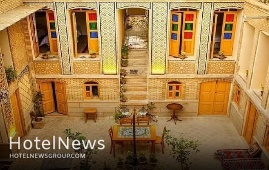
Over 11,000 job opportunities are estimated to be generated by implementing 245 tourism-related projects across the northeastern Khorasan Razavi province, the deputy provincial tourism chief has announced. Upon the completion of the ongoing projects that have been underway for about ten years, a total of 11,500 jobs will be provided for the locals, CHTN quoted Ahmad Dinari as saying on Sunday. Some 500 trillion rials (about $12 billion at the official exchange rate of 42,000 rials per dollar) have been invested in the mentioned projects so far, the official added. The projects include hotels, apartment hotels, guesthouses, travel complexes, recreational centers, and villages specifically developed for health tourism, he noted. He also noted that foreign investment in the tourism sector of the province amounted to $90 million last year. Mashhad, the capital of Khorasan Razavi province, is Iran’s holiest and second-largest city. Its raison d’être and main sight is the striking massive shrine complex of Imam Reza (AS), the eighth Shia Imam Dozens of five-star hotels and hostels are dotted across Mashhad. The city has also the highest concentration of water parks in the country, and it also embraces a variety of cultural and historical sites that are generally crowded. The metropolis is also a good place to buy top handwoven rugs and carpets, and it’s a staging post for travel to Turkmenistan, Afghanistan, and little-touristic Khorasan regions. Before the coronavirus puts almost everything on lockdown, Mashhad, played host to thousands of travelers and pilgrims who come from various Iranian cities, neighboring countries, and even across the globe to visit the holy shrine. According to official statistics, some 37 million Iranian pilgrims and travelers visited the shrine city of Mashhad during the first ten months of the past Iranian calendar year 1398 (March 21, 2019- March 10, 2020). Of whom some eight million came by road, six million by rail, 3.8 million by air, and 18 million by private cars.
Create: Oct 19, 2021 Edit: Oct 19, 2021 Regional News
Qeshm Island recorded over 2.8 million visitors during the first half of the current Iranian calendar year (started March 21). The official data provided by Qeshm’s Department of Ports and Maritime marked a 20 percent increase in tourism flow compared to the same period year on year, IRNA reported. “In the first half of this year, 2,820,229 people traveled to Qeshm, which shows a 20% growth compared to the same period the last year,” Ali Ashtari, who presides over the department, said on Saturday. The island is a heaven for eco-tourists as it embraces wide-ranging attractions such as the Hara marine forests and about 60 villages dotted mostly across its rocky coastlines. It also features geologically eye-catching canyons, hills, caves, and valleys, most of which are protected as part of the UNESCO-tagged Qeshm Island Geopark, itself a haven for nature-lovers. Many travelers to Qeshm believe that the Stars Valley or Valley of Stars is a “MUST SEE”. It is home to bizarre-shaped gorges, tall pillars, canyon-like paths, hollowed-out spaces as well as the smooth and round stones, which have been formed by the wind and rain eroding the soil, rocks, and stones. Locals believe that a star once fell on this area thereby creating the rocky shapes that make it seem as if from another planet.
Create: Oct 19, 2021 Edit: Oct 19, 2021 Regional News
